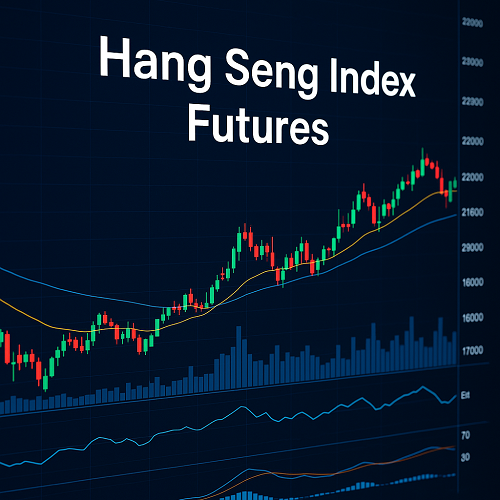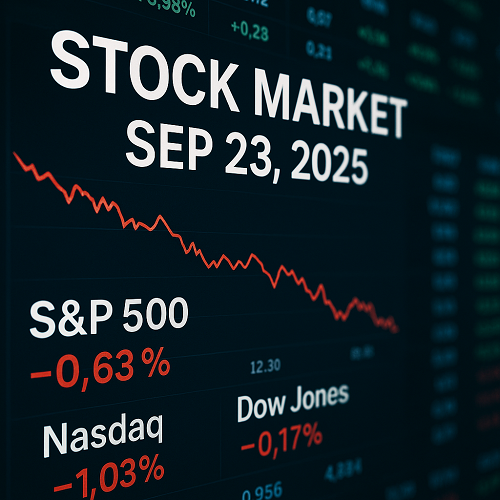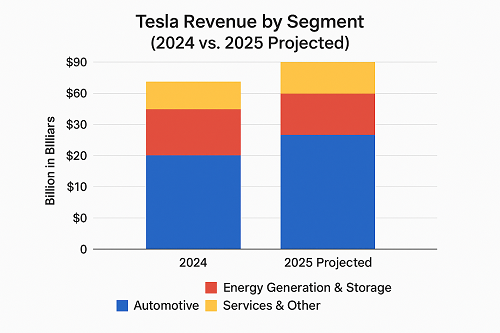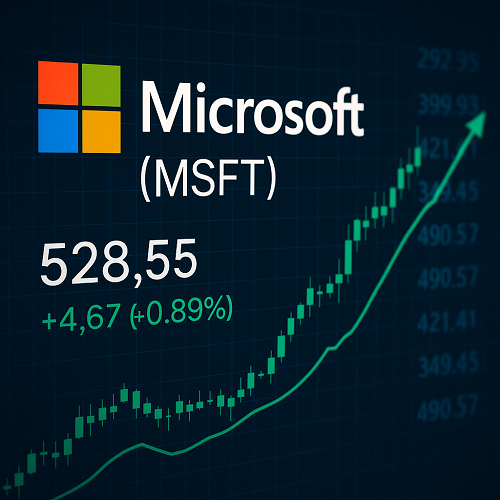What is the Hang Seng Index (HSI)?
- The Hang Seng Index, which is a major component of the HKEX index, is the benchmark equity index of Hong Kong, covering a broad set of large-cap, highly liquid companies listed on the Hong Kong Stock Exchange.
- It is market capitalisation-weighted: larger companies by market value have more influence.
- The index is segmented into major sectors (Finance; Commercial & Industrial; Properties; Utilities), so sectoral shifts can have pronounced effects.
What Are Hang Seng Index Futures?
- Futures are standardized contracts obligating the buyer to purchase—and the seller to sell—the underlying index at a predetermined price on a specified future date. In this case, the underlying is the Hang Seng Index.
- Introduced in May 1986 on the Hong Kong Futures Exchange (HKFE), specifically to allow investors to hedge exposure to Hong Kong equities, engage in arbitrage, or take leveraged directional views.
- Commonly traded by institutional investors (hedging large portfolios), speculators, and sometimes by retail traders depending on regulatory access.
Contract Specifications & Key Features
A clear understanding of the specifications is essential. Here are the detailed specs:
| Specification | Details |
|---|---|
| Underlying Index | Hang Seng Index (HSI) |
| Contract Multiplier | HK$50 per index point for the standard HSI Futures contract. |
| Minimum Price Fluctuation (Tick Size) | 1 index point. |
| Symbol / Code | Typically “HSI” for standard contract. |
| Contract Months | Short-dated futures: next three calendar months, next three quarterly months. For long-dated: June & December plus other quarterly months. |
| Last Trading Day | The second-last trading day of the contract month. |
| Settlement | Final settlement price is the average of quotations of the HSI during the continuous SEHK trading session on the last trading day: (i) every 5-minute interval from 5 minutes after the opening until 5 minutes before the close; (ii) the closing price on SEHK that day. |
| Trading Hours | Multiple sessions: • Pre-market opening: 8:45-9:15 am (HK time) • Normal sessions: 9:15-12:00; 1:00-4:30 pm • Overnight / extended hours: 5:15 pm until 3:00 am (depending on contract & market rules) |
| Position Limits / Delta Limits | There are regulatory limits on positions (both short and long) aggregated across certain related instruments (futures, options, mini / net return / total return futures) to manage systemic risk. |
Trading Hours, Settlement & Position Rules
- Be aware of session breaks: mid-day break from 12:00 to 1:00 pm. Overnight sessions (evening into following morning) allow trading outside normal hours which can be important for reacting to global news.
- On the last trading day, some trading hours may differ (for instance, the expiring contract month often has a truncated evening session). It’s critical to check which rules apply for that month.
- Settlement method is cash-settled via calculated index closing; no physical delivery since the underlying is an index. The formula for final settlement (as above) ensures fairness and mitigates manipulation.
Pricing, Margin & Costs
- Since futures are leveraged products, you only need to post margin, which is a fraction of the full notional value. Knowing margin requirements is essential for risk and capital planning. HKEX publishes margin schedules which vary depending on volatility, contract size, etc.
- Costs include: exchange fees, clearing fees, commissions, and possible financing/interest costs if you hold overnight / roll forward contracts.
- Because the tick size is 1 index point and contract multiplier is HK$50/point, each tick move is HK$50. So if HSI moves 100 points, profit/loss is 100 * HK$50 = HK$5,000 per contract (ignoring fees & margin).
Key Drivers & Fundamental Factors
Understanding what moves the HSI Futures is crucial. Some key drivers:
- Economic Data from Hong Kong & Mainland China: GDP growth, industrial production, PMI, retail sales, inflation, employment – especially China’s macro data given Hong Kong’s integration.
- Monetary Policy & Interest Rates: Decisions from the HKMA, People’s Bank of China, and global central banks (Fed, etc.) affect discount rates, risk sentiment, and currency valuations.
- Political / Regulatory Risks: Hong Kong’s policies, China’s regulatory environment, changes in property sector regulations, cross-border capital flows.
- Foreign Investment & Currency Movements: HKD is pegged, but capital movement, yuan (RMB / CNH) strength/weakness, expectations of currency flexibility, trade policy issues all influence sentiment.
- Global Market Conditions: U.S./European stock market trends, geopolitical tensions, commodity prices, USD strength, risk-on vs risk-off dynamics.
Technical Analysis: Tools & Indicators for HSI Futures
These are some of the best technical tools for HSI Futures trading:
- Support/Resistance Levels: Previous highs/lows, round numbers (e.g. 20,000; 25,000); psychological levels.
- Trendlines & Chart Patterns: Channels, triangles, head and shoulders, double tops/bottoms.
- Moving Averages: Simple and exponential (e.g. 9, 20, 50, 200-period) to track trend and possible reversal zones.
- Momentum Indicators: RSI, MACD, Stochastic – useful for detecting overbought/oversold conditions or divergence.
- Volume & Open Interest: Volume confirms move strength; open interest helps understand liquidity and whether new money is entering.
- Volatility Measures: ATR (Average True Range), Bollinger Bands or Keltner Channels to estimate likely move size or set stops.
Trading Strategies & Use Cases
Here are proven strategies / use cases when trading HSI Futures:
| Strategy | Description | Favorable Conditions | Pitfalls / Notes |
|---|---|---|---|
| Directional Trend Following | Ride ongoing uptrends or downtrends via breakout or moving average crossover. | High momentum markets; clear breakouts. | Prone to whipsaws in choppy/consolidating markets. Use filters. |
| Mean Reversion / Range Trading | Buy near support, sell near resistance; fade moves when price deviates too far from mean. | Low volatility, tight ranges. | Danger during strong trending periods. Tight risk control essential. |
| Spread Strategies (Calendar Spreads) | Going long/short in one contract vs another (e.g. near vs far month) to capture time decay, roll benefits or carry. | When futures curve has a structure (contango or backwardation) or during volatility shifts. | Needs careful margin and risk management; weaker liquidity in far months. |
| Hedging | Portfolio managers hedge exposure to Hong Kong equities via short futures when markets are weak / uncertain. | When correlation is high; ahead of known risk events. | Hedging costs (margin, financing, basis risk) can eat into returns. |
| News / Event-Driven Plays | Trading around macro announcements, Hong Kong / China policy changes, earnings, GDP data, etc. | When event risk is high; high volatility expected. | Big risk of slippage, gaps, and unexpected outcomes. Pre-plan entry/exit. |
Risk Management in HSI Futures
Given leverage and volatility, robust risk management is vital:
- Position Sizing: Never risk too large a fraction of account equity per trade (e.g. 1-2%); use the size in contracts accordingly.
- Use of Stop Loss / Take Profit Orders: Set stops relative to volatility (ATR etc.), and manage reward/risk ratio.
- Monitor Overnight / After-Hours Risk: Because trading continues outside regular hours, news may gap price.
- Margin / Leverage Awareness: Know maintenance margin and the risk of being margin-called.
- Diversification: Not all capital in HSI; consider other assets or indices to spread risk.
- Contingency for High Volatility / Black Swan Events: e.g. political shock, regulatory ban, sudden macro drift — always have exit plans.
Market Structure, Liquidity & How to Access
- Liquidity: HSI futures are among the most liquid equity index futures in Asia. Deep order books, active participation from local & international institutions.
- Access: Via brokers / futures commission merchants cleared on HKEX, subject to regulatory requirements. Some markets allow indirect exposure (ETFs, CFDs) where direct futures access is limited.
- Mini Futures / Other Variants: There are smaller-size contracts (“Mini-HSI”) which reduce notional exposure; attractive for smaller accounts.
Common Mistakes & How to Avoid Them
- Over-leveraging, especially in volatile markets.
- Trading without understanding settlement mechanisms (e.g., unexpected costs at expiry).
- Ignoring overnight or session gaps.
- Using generic indicators without calibrating them for HSI’s volatility & behavior.
- Not tracking macro or regulatory developments in China / Hong Kong (which can dominate moves).
- Poor exit planning; failing to cut losses early.
Outlook & Forecasts — What Traders Should Watch For
Here are key themes & futures outlooks for HSI Futures:
- China Economic Policy & Stimulus: Any new infrastructure, technology, or consumption stimulus could lift the Index.
- Property Sector Regulation: Risks emanating from property developers, debt issues, regulatory crackdowns.
- Global Rate Movements: U.S. Fed & global central banks’ policies tend to feed into Hong Kong’s interest environment and equity valuations.
- Investor Sentiment & Flows from Mainland China: Capital inflows/outflows via Stock Connect or direct investment channels can swing sentiment heavily.
- Tech Stocks / ESG Trends: With global interest in ESG & technology, technology-oriented constituents of HSI could be major drivers.
Some analysts see potential resistance around ~25,000-30,000 HSI depending on valuations; bearish scenarios focus on major support zones (e.g., 17,000-20,000) if severe policy headwinds appear. (These ranges depend heavily on macro and global conditions.)
Conclusion
Hang Seng Index Futures are powerful tools: for hedging, speculation, arbitrage, and portfolio management. Their liquidity, transparency, and integration with global markets make them especially attractive to experienced traders. But they come with significant risk—leverage, geopolitical & policy sensitivities, potential for large gaps, and market structure quirks.
Success with HSI Futures depends on:
- Mastery of contract specs and settlement rules.
- Keeping abreast of Hong Kong & China macro trends.
- Applying disciplined technical and fundamental analysis.
- Using strong risk management and awareness of costs.





 XAUT-USD
XAUT-USD  AMD
AMD  MARA
MARA  SHOP
SHOP  BULL
BULL  CL=F
CL=F